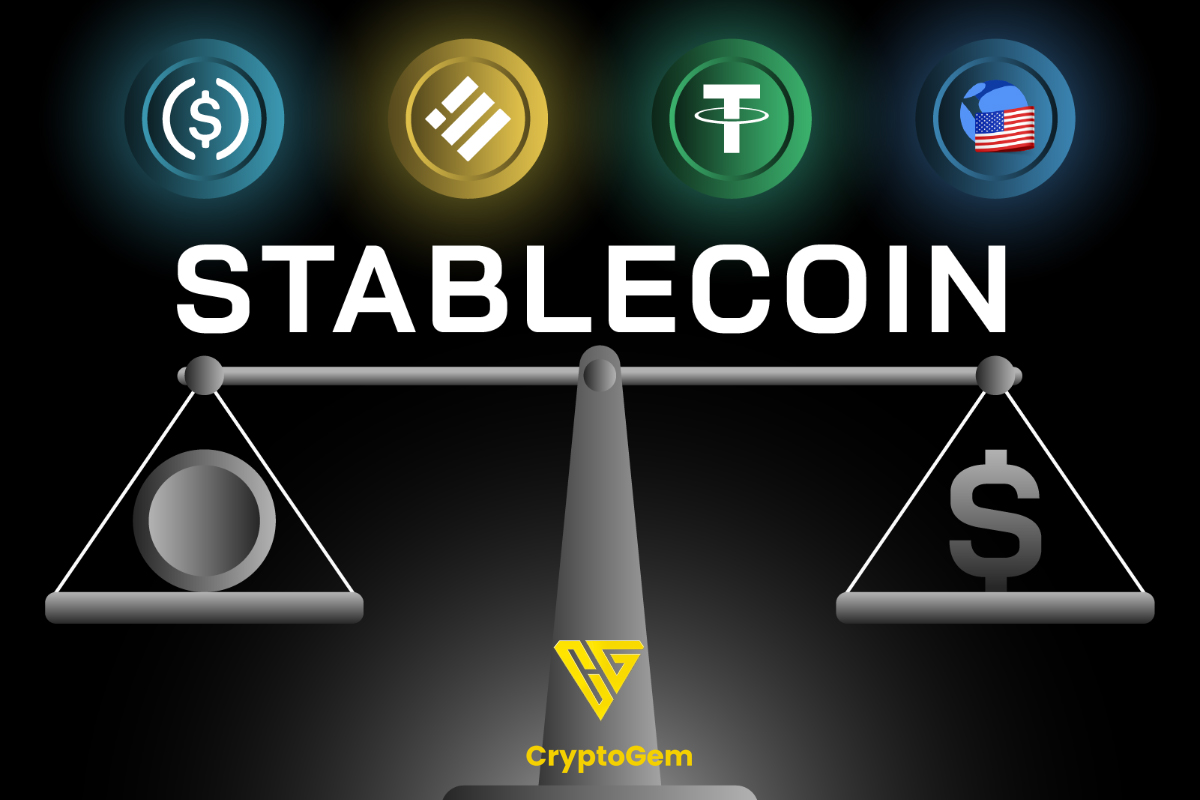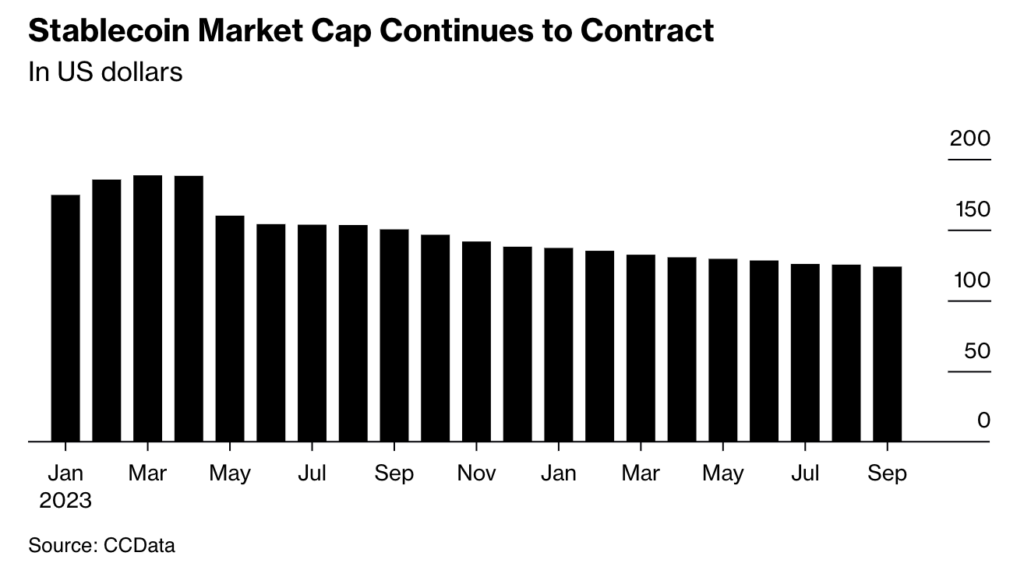Key Points:
- Stablecoin market capitalization dropped to $123.8 billion in September, the lowest since 2021.
- Trading volume for stablecoins fell 28.4% to $331 billion, a two-year low.
- Tether (USDT) dominates with 67.3% of the market, while PayPal’s stablecoin launch has limited impact.
Stablecoin market capitalization still sees a sharp decline after market difficulties in 2022 and early 2023.
Stablecoin Market Capitalization Sees Significant Contraction
The total market capitalization of stablecoins, a form of digital currency tied to traditional assets like fiat, has witnessed a decline to $123.8 billion as of September, according to data from CCData. This marks the lowest point since August 2021, when the sector was valued at $137.9 billion in December.
In addition to the stablecoin market capitalization decline, stablecoin trading volume on centralized exchanges, including Coinbase, dropped by 28.4% to $331 billion in September. This represents the lowest monthly trading volume since July 2020.
According to Bloomberg, this contraction in the stablecoin market aligns with an overall reduction in crypto market activity following various scandals and bankruptcies in 2022.
Tether Dominates as Stablecoin Sector Faces Challenges
While several stablecoins like USD Coin and BUSD have seen their market caps shrink, Tether (USDT), the sector leader, has increased its dominance. USDT now accounts for 67.3% of the total stablecoin market, marking its highest percentage since March 2021.
In August, PayPal introduced its stablecoin, PayPal USD (PYUSD), for payments and transfers. PYUSD is issued by Paxos Trust Company and is backed by U.S. dollar deposits and similar assets. However, despite this move, the overall digital asset sector supporting most cryptocurrencies continues to contract, unaffected by PayPal’s entrance into the stablecoin arena.

















